Canary Islanders
Canary Islanders, or Canarians (Spanish: canarios), are a Romance[7] people and subgroup of the Spaniards. They are indigenous to the Canary Islands, an autonomous community of Spain near the coast of northwest Africa, and descend from a mixture of Spanish settlers and aboriginal Guanche peoples.[8] The distinctive variety of the Spanish language spoken in the region is known as habla canaria (Canary speech) or the (dialecto) canario (Canarian dialect). The Canarians, and their descendants, played a major role during the conquest, colonization, and eventual independence movements of various countries in Latin America. Their ethnic and cultural presence is most palpable in the countries of Uruguay, Venezuela, Cuba, Dominican Republic, and the United States territory of Puerto Rico.
| Total population | |
|---|---|
| c. 1,600,000[1] | |
| Regions with significant populations | |
72.1% of the total Canary Islands population | |
| Significant Canary Islander diaspora in | |
| Total unknown | |
| 42,671[2][3] | |
| 40,602[4] | |
| 2,390[2] | |
| 2,114[5] | |
| 1,600 | |
| 1,471[5] | |
| 628[5] | |
| 620[5] | |
| Total unknown[5] | |
| Total unknown | |
| Languages | |
| Canarian Spanish, Silbo Gomero | |
| Religion | |
| Predominantly Roman Catholic (85%)[6] | |
| Related ethnic groups | |
| other Spaniards, Madeirans, Portuguese, Berbers (Guanches) | |
History
The original inhabitants of the Canary Islands are commonly known as Guanches (although this term in its strict sense only refers to the original inhabitants of Tenerife). They are believed to be either Berbers in origin or a related group.
The islands were conquered by Normans, Portuguese, and Castilians (mainly Andalusians) at the beginning of the 15th century. In 1402, they began to subdue and suppress the native Guanche population. The Guanches were initially enslaved and gradually absorbed by the Spanish colonizers.
After subsequent settlement by Spaniards and other European peoples, mainly Portuguese, the remaining Guanches were gradually diluted by the settlers and their culture largely vanished. Alonso Fernández de Lugo, conqueror of Tenerife and La Palma, oversaw extensive immigration to these islands during a short period from the late 1490s to the 1520s from mainland Europe, mostly Spain and Portugal, and immigrants included Galicians, Castilians, Catalans, Basques, Portuguese and Italians. At subsequent judicial enquiries, Fernández de Lugo was accused of favoring Genoese and Portuguese immigrants over Castilians.[9]
Ancestry
The native inhabitants of the Canary Islands hold a gene pool that is of predominantly Iberian ancestry, with some Guanche Berber extraction. Guanche genetic markers have also been found recently in Puerto Rico and, at low frequencies, in peninsular Spain after later emigration from the Canary Islands.[10]
Population genetics
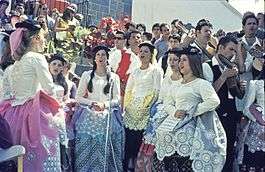
Uniparental markers
The most frequent (maternal-descent) mtDNA haplogroup in Canary Islands is H (37.6%), followed by U6 (14.0%), T (12.7%), not-U6 U (10.3%) and J (7.0%). Two haplogroups, H and U6, alone account for more than 50% of the individuals. Significant frequencies of sub-Saharan L haplogroups (6.6%) is also consistent with the historical records on introduction of sub-Saharan slave labour in Canary Islands. However, some Sub-Saharan lineages are also found in North African populations, and as a result, some of these L lineages could have been introduced to the Islands from North Africa.[11][12] A 2009 study of DNA extracted from the remains of aboriginal inhabitants found that 7% of lineages were haplogroup L, which leaves open the possibility that these L lineages were part of the founding population of the Canary Islands.[13]
A 2003 genetics research article by Nicole Maca-Meyer et al. published in the European Journal of Human Genetics compared aboriginal Guanche mtDNA (collected from Canarian archaeological sites) to that of today's Canarians and concluded that "despite the continuous changes suffered by the population (Spanish colonization, slave trade), aboriginal mtDNA lineages constitute a considerable proportion [42–73%] of the Canarian gene pool". According to this article, both percentages are obtained using two different estimation methods; nevertheless according to the same study the percentage that could be more reliable is the one of 73%.[14]
Although the Berbers are the most probable ancestors of the Guanches, it is deduced that important human movements (e.g., the Islamic-Arabic conquest of the Berbers) have reshaped Northwest Africa after the migratory wave to the Canary Islands and the "results support, from a maternal perspective, the supposition that since the end of the 16th century, at least, two-thirds of the Canarian population had an indigenous substrate, as was previously inferred from historical and anthropological data."[15] mtDNA haplogroup U subclade U6b1 is Canarian-specific[16] and is the most common mtDNA haplogroup found in aboriginal Guanche archaeological burial sites.[15]
Y-DNA, or Y-chromosomal, (direct paternal) lineages were not analysed in this study; however, an earlier study giving the aboriginal y-DNA contribution at 6% was cited by Maca-Meyer et al., but the results were criticized as possibly flawed due to the widespread phylogeography of y-DNA haplogroup E1b1b1b, which may skew determination of the aboriginality versus coloniality of contemporary y-DNA lineages in the Canaries. Regardless, Maca-Meyer et al. state that historical evidence does support the explanation of "strong sexual asymmetry...as a result of a strong bias favoring matings between European males and aboriginal females, and to the important aboriginal male mortality during the Conquest."[17] The genetics thus suggests that native men were sharply reduced in numbers due to the war, large numbers of Spanish men stayed in the islands and married the local women, the Canarians adopted Spanish names, language, and religion, and in this way, the Canarians were Hispanicized.
Indeed, according to a recent study by Fregel et al. 2009, in spite of the geographic nearness between the Canary Islands and Morocco the genetic ancestry of the Canary islands males is mainly of European origin. Nearly 67% of the haplogroups resulting from are Euro–Eurasian (R1a (2.76%), R1b (50.62%), J (14%), I (9.66%) and G (3.99%)). Unsurprisingly the Spanish conquest brought the genetic base of the current male population of the Canary Islands. Nevertheless, the second most important haplogroup origin is Northern Africa. E1b1b (14% including 8.30% of the typical berber haplogroup E-M81), E1b1a and E1a (1.50%), and T (3%) haplogroups are present at a rate of 33%. Even if a part of these "eastern" haplogroups were introduced by the Spanish (they are well represented in Spain), we can suppose that a good portion of this rate was already there at the time of the conquest.[18][19] According to the same study, the presence of autochthonous North African E-M81 lineages, and also other relatively abundant markers (E-M78 and J-M267) from the same region in the indigenous Guanche population, "strongly points to that area [North Africa] as the most probable origin of the Guanche ancestors". In this study, Fregel et al. estimated that, based on Y-chromosome and mtDNA haplogroup frequencies, the relative female and male indigenous Guanche contributions to the present-day Canary Islands populations were respectively of 41.8% and 16.1%.[18]
| Island/NW African mtDna | N | % U6 | %L | Total | Study |
| La Gomera | 46 | 50.01 % | 10.86 % | 60.87 % | Fregel 2009[20] |
| El Hierro | 32 | 21.88 % | 12.49 % | 34.37 % | Fregel 2009 |
| Lanzarote | 49 | 20.40 % | 8.16 % | 28.56 % | Fregel 2009 |
| Gran Canaria | 80 | 11.25 % | 10 % | 21.25 % | Fregel 2009 |
| Tenerife | 174 | 12.09 % | 7.45 % | 19.54 % | Fregel 2009 |
| La Palma | 68 | 17.65 % | 1.47 % | 19.12 % | Fregel 2009 |
| Fuerteventura | 42 | 16.66 % | 2.38 % | 19.04 % | Fregel 2009 |
Autosomal DNA
An autosomal study in 2011 found an average Northwest African influence of about 17% in Canary Islanders with a wide interindividual variation ranging from 0% to 96%. According to the authors, the substantial Northwest African ancestry found for Canary Islanders supports that, despite the aggressive conquest by the Spanish in the 15th century and the subsequent immigration, genetic footprints of the first settlers of the Canary Islands persist in the current inhabitants. Paralleling mtDNA findings, the largest average Northwest African contribution was found for the samples from La Gomera.[21]
| Island | N | Average NW African ancestry |
| La Gomera | 7 | 42.50 % |
| Fuerteventura | 10 | 21.60 % |
| La Palma | 7 | 21.00 % |
| El Hierro | 7 | 19.80 % |
| Lanzarote | 13 | 16.40 % |
| Tenerife | 30 | 14.30 % |
| Gran Canaria | 30 | 12.40 % |
| Total Canary Islanders | 104 | 17.40 % |
Another recent study by Guillen-Guio et al. 2018 sequenced the entire genomes of a sample of 400 adult men and women from all the islands except La Graciosa to determine the relationship of Canarian genetic diversity to the more frequent complex pathologies in the archipielago. The study indicated that Canarian DNA shows distinctive genetic markers, the result of a combination of factors such as the geographic isolation of the islands, the adaption to the environment of its inhabitants and the historic admixture of the Pre-Hispanic population of the archipielago (coming from North Africa), with European and from Sub-Saharan area individuals. Drawing on these data, it was estimated that the Canarian population is, on average at an autosomal level, 75% European, 22% North African and 3% Sub-saharan.[22] According to the authors "the proportion of SSA ancestry we observed in Canary Islanders likely originated in the postconquest importation of enslaved African people.". This study reported the below Genomic Ancestry Proportions in Canary Islanders.[23]
| North African | North African | North African | Sub-Saharan African | Sub-Saharan African | Sub-Saharan African | |
|---|---|---|---|---|---|---|
| Min. | Mean | Max. | Min. | Mean | Max. | |
| Fuerte ventura | 0.218 | 0.255 | 0.296 | 0.011 | 0.027 | 0.046 |
| Lanzarote | 0.214 | 0.254 | 0.296 | 0.014 | 0.032 | 0.057 |
| Gran Canaria | 0.155 | 0.200 | 0.264 | 0.005 | 0.032 | 0.082 |
| Tenerife | 0.149 | 0.208 | 0.255 | 0.002 | 0.015 | 0.057 |
| La Gomera | 0.160 | 0.221 | 0.289 | 0.013 | 0.048 | 0.092 |
| La Palma | 0.170 | 0.200 | 0.245 | 0.000 | 0.013 | 0.032 |
| El Hierro | 0.192 | 0.246 | 0.299 | 0.005 | 0.020 | 0.032 |
Source: Genomic Ancestry Proportions (from ADMIXTURE, K-4) in Canary Islanders (Guillen-Guio et al. 2018)
Ancient Canarians
The Guanches are related to the indigenous Berbers of neighboring Morocco. The Guanche language is firmly in the Afro-Asiatic family of languages, and is a dialect of the Berber subfamily therein. In 2017, the first genome-wide data from the Guanches confirmed a North African origin and that they were genetically most similar to modern North African Berber peoples of the nearby North African mainland. It also showed that modern inhabitants of Gran Canaria carry an estimated 16%–31% Guanche autosomal ancestry.[8]
Culture
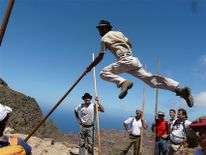

Modern-day Canarian culture is Spanish, with some Guanche influences. Some of the Canarian traditional sports such as lucha canaria (Canarian fight), uego del palo (stick game) or salto del pastor (shepherd's jump), among others, have their roots in Guanche culture. Additionally, other traditions include Canarian pottery, words of Guanche origin in the Canarian speech and the rural consumption of guarapo gomero and gofio. The inhabitants of La Gomera also retain an ancient way of communicating across deep ravines by means of a whistled speech called Silbo Gomero, which can be heard up to 3 km (2 miles) away.[24] This indigenous whistled language was invented by the Guanches, and was then adopted by the Spanish settlers in the 16th century after the Guanches were culturally assimilated into the population. The language was also formerly spoken on el Hierro, Tenerife and Gran Canaria [25][24]
The holidays celebrated in the Canary Islands are of international, national and regional or insular character. The official day of the autonomous community is Canary Islands Day on 30 May. The anniversary of the first session of the Parliament of the Canary Islands, based in the city of Santa Cruz de Tenerife, held on 30 May 1983, is commemorated with this day. The most famous festival of the Canary Islands is the carnival. The carnival is celebrated in all the islands and all its municipalities, perhaps the two busiest being those of the two Canarian capitals; the Carnival of Santa Cruz de Tenerife (Tourist Festival of International Interest) and the Carnival of Las Palmas de Gran Canaria. It is celebrated on the streets between the months of February and March. But the rest of the islands of the archipelago have their carnivals with their own traditions among which stand out: The Festival of the Carneros of El Hierro, the Festival of the Diabletes of Teguise in Lanzarote, Los Indianos de La Palma, the Carnival of San Sebastián de La Gomera and the Carnival of Puerto del Rosario in Fuerteventura.
The strong influence of Latin America in Canarian culture is due to the constant emigration and return over the centuries of Canarians to that continent, chiefly to Puerto Rico, Cuba, the Dominican Republic, and coastal Venezuela and Colombia. To a lesser extent, they also went to the US states of Louisiana (mostly the southern portion) and Texas (mostly in and around San Antonio), and some areas in eastern Mexico including Nuevo León and Veracruz.[26]
Religion
Catholic Church

The majority of native Canary Islanders are Roman Catholic with various smaller foreign-born populations of other Christian beliefs such as Protestants from northern Europe.
The appearance of the Virgin of Candelaria (Patron of Canary Islands) was credited with moving the Canary Islands toward Christianity. Two Catholic saints were born in the Canary Islands: Peter of Saint Joseph de Betancur[27] and José de Anchieta.[28] Both born on the island of Tenerife, they were respectively missionaries in Guatemala and Brazil.
The Canary Islands are divided into two Catholic dioceses, each governed by a bishop:
- Diócesis Canariense: Includes the islands of the Eastern Province: Gran Canaria, Fuerteventura and Lanzarote. Its capital was San Marcial El Rubicón (1404) and Las Palmas de Gran Canaria (1483–present). There was a previous bishopric which was based in Telde, but it was later abolished.
- Diócesis Nivariense: Includes the islands of the western province: Tenerife, La Palma, La Gomera and El Hierro. Its capital is San Cristóbal de La Laguna (1819–present).
Other religions
Around 5 percent of Canarians belong to a minority religion. Separate from the overwhelming Christian majority are a minority of Muslims who are usually foreign-born.[29] At present, there are in the Canary Islands a figure of approximately 70,000 Muslims and 40 mosques and places of worship throughout the archipelago.[30] Other religious faiths represented include Jehovah Witnesses, The Church of Jesus Christ of Latter-day Saints as well as Hinduism.[2] Minority religions are also present such as the Church of the Guanche People which is classified as a neo-pagan native religion,[2] it also highlights Buddhism,[2] Judaism,[2] Baha'i,[2] Chinese religions[2] and Afro-American religion.[2]
Among the followers of Islam, the Islamic Federation of the Canary Islands exists to represent the Islamic community in the Canary Islands as well as to provide practical support to members of the Islamic community.[31]
Statistics
The distribution of beliefs in 2012 according to the CIS Barometer Autonomy was as follows:[32]
- Catholic 84.9%
- Atheist/Agnostic/Unbeliever 12.3%
- Other religions 1.7%
Among the believers 38.7% go to religious services frequently.
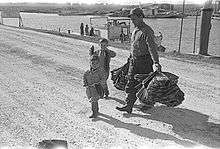
Canarian diaspora
Historically, the Canary Islands have served as a hub between Spain and the Americas; favoured by that circumstance, large groups of Canary islanders have emigrated and settled all over the New World as early as the 15th century, mainly in Cuba, Puerto Rico, Dominican Republic, Colombia, Venezuela and Uruguay.
Demographics
The Canarian population includes long-tenured and new waves of mainland Spanish immigrants, including Andalucians, Galicians, Castilians, Catalans, Basques and Asturians of Spain; old settlers of Portuguese, Italians, the Dutch people or Flemings, and French people as well as recent foreign-born populations.[33] In 2019 the total population was 2,153,389, of which 72.1% were native Canary Islanders.[34] A total of 80.6%, or 1,735,457, were born in Spain and 19.4%, or 417,932, were born outside the country. Of these, the majority are from the Americas, mainly from Venezuela (66,573) and Cuba (41,792) and Colombia (31,368). There are 38,768 people from Africa, the majority from Morocco (24,268).[33][35]
| Population history[36] | ||
|---|---|---|
| Year | Population | |
| 1768 | 155,763 | |
| 1787 | 168,928 | |
| 1797 | 173,865 | |
| 1842 | 241,266 | |
| 1860 | 237,036 | |
| 1887 | 301,983 | |
| 1900 | 364,408 | |
| 1920 | 488,483 | |
| 1940 | 687,937 | |
| 1960 | 966,177 | |
| 1981 | 1,367,646 | |
| 1990 | 1,589,403 | |
| 2000 | 1,716,276 | |
| 2010 | 2,118,519 | |
| 2011 | 2,082,655[37] | |
| 2019 | 2,152,590[1] | |
| Population of the Canary Islands 2019 | |||
|---|---|---|---|
| Birthplace | Population | Percent | |
| 1,553,517 | 72.1 | ||
| Other regions (Spain) | 176,302 | 8.2 | |
| Total, Spain | 1,735,457 | 80.6 | |
| Foreign-born | 417,932 | 19.4 | |
| Americas | 201,257 | 9.3 | |
| Venezuela | 66,573 | - | |
| Cuba | 41,792 | - | |
| Colombia | 31,361 | - | |
| Argentina | 17.429 | - | |
| Uruguay | 8,687 | - | |
| Rest of Europe | 154,511 | 7.2 | |
| Italy | 39,469 | - | |
| Germany | 25,921 | - | |
| United Kingdom | 25,339 | - | |
| Africa | 38,768 | 1.8 | |
| Morocco | 24,268 | - | |
| Asia | 23,082 | 1.1 | |
| China | 9,848 | - | |
| Oceania | 314 | 0.0 | |
| Total | 2,153,389 | 100.0% | |
| Source[35][34] | |||
Canarian identity
According to a 2012 study by the Centro de Investigaciones Sociológicas, when asked about national identity, the majority of respondents from the Canary Islands (49.3%) consider themselves Spanish and Canarian in equal measures, followed by 37.1% who consider themselves more Canarian than Spanish. Only 6.1% of the respondents consider themselves only Canarian.[38]
| National Sentiment in the Canary Islands[38] | |||
|---|---|---|---|
| Only Spanish | 3.5% | ||
| More Spanish than Canarian | 2.0% | ||
| Equally Spanish and Canarian | 49.3% | ||
| More Canarian than Spanish | 37.1% | ||
| Only Canarian | 6.1% | ||
| Did not answer | 2.0% | ||
Notable Canarians
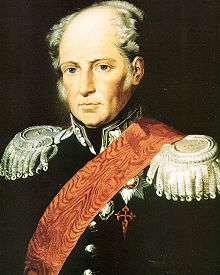
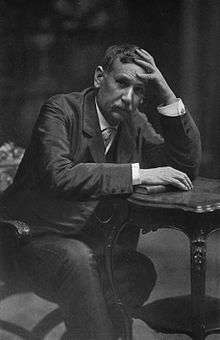
| Part of a series on the |
| Spanish people |
|---|
_alternate_colours.svg.png) Rojigualda (historical Spanish flag) |
| Regional groups |
Other groups |
| Significant Spanish diaspora |
| Languages |
|
Other languages |
|
|
- Javier Bardem, actor
- José de Anchieta, Jesuit priest, saint and missionary in Brazil.
- Rosana Arbelo, singer
- Mary of Jesus de León y Delgado, Dominican lay Sister and mystic.
- Amaro Pargo, one of the most famous corsairs of the golden age of piracy.
- Rafael Arozarena, writer
- Carolina Bang, actress
- Bencomo, pre-Hispanic King
- Beneharo, pre-Hispanic King
- Agustín de Betancourt y Molina, engineer, Russian General
- Peter of Saint Joseph Betancur, saint and missionary in Guatemala.
- Manolo Blahnik, fashion designer
- Jose Campeche, artist
- José Comas Quesada, painter
- Óscar Domínguez, painter
- Ana Guerra, singer
- Agoney, singer
- Doramas, pre-Hispanic warrior
- José Doreste, sailor, yacht racer and Olympic champion
- Luis Doreste, sailor, yacht racer and world champion and Olympic champion
- Ruslan Ela, soccer player
- Nicolás Estévanez, politician
- José Franchy y Roca, journalist and politician, Minister of Industry in the Second Spanish Republic
- Juan Carlos Fresnadillo, filmmaker
- Pedro García Cabrera, poet
- Antonio González y González, scientist, chemist
- Fernando Guanarteme, pre-Hispanic king
- Pedro Guerra, music composer and singer
- Ángel Guimerá, writer
- Emeterio Gutiérrez Albelo, poet
- Nancy Fabiola Herrera, mezzo-soprano opera singer
- K-Narias, reggaeton pop duo
- Alfredo Kraus, opera singer
- Fernando León y Castillo, politician
- Juan Fernando López Aguilar, politician and jurist, former Minister of Justice
- Domingo López Torres, painter, writer, poet and Marxist revolutionary
- Maninidra, pre-Hispanic warrior
- César Manrique, artist
- Cristo Marrero Henríquez, professional footballer
- Manolo Millares, painter
- Francisco de Miranda, Venezuelan general, politician and precursor of South America independence
- María Montez, actress, Hollywood "Queen of Technicolor"
- Manuel Mora Morales, writer and filmmaker
- Juan Negrín, politician
- Leopoldo O'Donnell, General and statesman
- Frances Ondiviela, telenovela actress, former Miss Spain and model
- María Orán, soprano
- Benito Pérez Galdós, writer
- Domingo Pérez Minik, writer
- Narciso Rodriguez, American fashion designer born to Cuban parents with Canarian origins[39]
- Sergio Rodríguez, NBA basketball player
- Pedro, professional footballer
- Aythami Ruano, judoka
- Daida Ruano, six time windsurfing world champion
- Jerónimo Saavedra, politician, mayor of Las Palmas and two times president of Canaries
- Mary Sánchez, Grammy nominated folk and bolero singer
- Victoria Sanchez, actress in American and Canadian movies and TV series
- David Silva, football player
- José Manuel Soria Lopez, politician, Minister of Tourism and Sport
- Carla Suárez Navarro, tennis player
- Tanausu, pre-Hispanic King of Aceró
- Tinguaro, pre-Hispanic warrior General
- Goya Toledo, actress and model
- Juan Carlos Valerón, football player
- Alberto Vázquez-Figueroa, writer
- José Vélez, singer
- Juan Verde Suárez, politician
- José Viera y Clavijo, historian
- Eduardo Westerdahl, painter, art critic and writer, member of the Surrealist movement
See also
- White Puerto Ricans
- White Dominicans (Dominican Republic)
- Cubans
- Nationalities in Spain
- Guanche language
- Isleños
- Canarian dialect
- Berberism
References
- "Estadística del Padrón Continuo. Datos provisionales a 1 de enero de 2019". 1 January 2019. Retrieved 3 February 2020.
- "How many Canarians in other countries". Archived from the original on 2012-08-03. Retrieved 2009-11-21.
- "Canarians in Venezuela". Archived from the original on 2011-07-13. Retrieved 2009-11-21.
- LA EMIGRACIÓN CANARIA A AMÉRICA A TRAVÉS DE LA HISTORIA. Manuel Hernández González
- EMIGRANTES CANARIOS EN EL MUNDO
- Interactivo: Creencias y prácticas religiosas en España
- Minahan, James (2000). One Europe, Many Nations: A Historical Dictionary of European National Groups. Greenwood Publishing Group. p. 776. ISBN 978-0313309847.
Romance (Latin) nations... Canarians
- Ricardo Rodríguez-Varel et al. 2017, Genomic Analyses of Pre-European Conquest Human Remains from the Canary Islands Reveal Close Affinity to Modern North Africans
- History of La Palma
- Maca-Meyer N, Villar J, Pérez-Méndez L, Cabrera de León A, Flores C (November 2004). "A tale of aborigines, conquerors and slaves: Alu insertion polymorphisms and the peopling of Canary Islands". Annals of Human Genetics. 68 (Pt 6): 600–5. doi:10.1046/j.1529-8817.2003.00125.x. PMID 15598218.
- Rando JC, Cabrera VM, Larruga JM, et al. (September 1999). "Phylogeographic patterns of mtDNA reflecting the colonization of the Canary Islands". Annals of Human Genetics. 63 (Pt 5): 413–28. doi:10.1046/j.1469-1809.1999.6350413.x. PMID 10735583.
- Brehm A, Pereira L, Kivisild T, Amorim A (December 2003). "Mitochondrial portraits of the Madeira and Açores archipelagos witness different genetic pools of its settlers". Human Genetics. 114 (1): 77–86. doi:10.1007/s00439-003-1024-3. PMID 14513360.
- Fregel R, Pestano J, Arnay M, Cabrera VM, Larruga JM, González AM (October 2009). "The maternal aborigine colonization of La Palma (Canary Islands)". European Journal of Human Genetics. 17 (10): 1314–24. doi:10.1038/ejhg.2009.46. PMC 2986650. PMID 19337312.
- Ancient mtDNA analysis and the origin of the Guanches
- Maca-Meyer N, Arnay M, Rando JC, et al. (February 2004). "Ancient mtDNA analysis and the origin of the Guanches". European Journal of Human Genetics. 12 (2): 155–62. doi:10.1038/sj.ejhg.5201075. PMID 14508507.
- Pereira, L; MacAulay, V; Prata, M.J; Amorim, A (2003). "Phylogeny of the mtDNA haplogroup U6. Analysis of the sequences observed in North Africa and Iberia". International Congress Series. 1239: 491–3. doi:10.1016/S0531-5131(02)00553-8.
- Maca-Meyer, Nicole; Arnay, Matilde; Rando, Juan Carlos; Flores, Carlos; González, Ana M; Cabrera, Vicente M; Larruga, José M (2003). "Ancient mtDNA analysis and the origin of the Guanches". European Journal of Human Genetics. 12 (2): 155–62. doi:10.1038/sj.ejhg.5201075. PMID 14508507.
- Fregel, Rosa; Gomes, Verónica; Gusmão, Leonor; González, Ana M; Cabrera, Vicente M; Amorim, António; Larruga, Jose M (2009). "Demographic history of Canary Islands male gene-pool: Replacement of native lineages by European". BMC Evolutionary Biology. 9: 181. doi:10.1186/1471-2148-9-181. PMC 2728732. PMID 19650893.
- Zurita AI, Hernandez A, Sanchez JJ, Cuellas JA (March 2005). "Y-chromosome STR haplotypes in the Canary Islands population (Spain)". Forensic Science International. 148 (2–3): 233–8. doi:10.1016/j.forsciint.2004.05.004. PMID 15639620.
- Fregel, Rosa; Pestano, Jose; Arnay, Matilde; Cabrera, Vicente M; Larruga, Jose M; González, Ana M (2009). "The maternal aborigine colonization of La Palma (Canary Islands)". European Journal of Human Genetics. 17 (10): 1314–24. doi:10.1038/ejhg.2009.46. PMC 2986650. PMID 19337312.
- Pino-Yanes, María; Corrales, Almudena; Basaldúa, Santiago; Hernández, Alexis; Guerra, Luisa; Villar, Jesús; Flores, Carlos (2011). O'Rourke, Dennis (ed.). "North African Influences and Potential Bias in Case-Control Association Studies in the Spanish Population". PLOS One. 6 (3): e18389. doi:10.1371/journal.pone.0018389. PMC 3068190. PMID 21479138.
- Cuatro apellidos canarios, un bisabuelo peninsular y otro africano
- Beatriz Guillen-Guio et al. 2018,Genomic Analyses of Human European Diversity at the Southwestern Edge: Isolation, African Influence and Disease Associations in the Canary Islands
- Laura Plitt (11 January 2013). "Silbo gomero: A whistling language revived". BBC News. Retrieved 13 January 2013.
- "Whistled language of the island of La Gomera (Canary Islands), the Silbo Gomero". Fourth Session of the Intergovernmental Committee 2009 (4.COM). Retrieved 10 October 2014.
- http://www.elporvenir.com.mx/notas.asp?nota_id=55499%5B%5D
- Pedro de San José Betancurt, Santo
- José de Anchieta, Santo
- Un 5% de canarios profesa una religión minoritaria
- "Entrevista al Señor Tijani El Bouji Presidente de FIDC". Archived from the original on 2018-08-05. Retrieved 2016-10-03.
- Los musulmanes de la Isla constituyen la primera Federación Islámica de Canarias
- Barometro Autonómico del CIS Canarias (2012); preguntas 47 y 48
- Suárez, Borja (25 June 2018). "El 91% de los nuevos habitantes de Canarias viene del extranjero". www.canarias7.es.
- "Estadística del Padrón Continuo a 1 de enero de 2019. Datos a nivel nacional, comunidad autónoma y provincia (Canarias)". Retrieved 20 February 2020.
- "Estadística del Padrón Continuo a 1 de enero de 2019. Datos a nivel nacional, comunidad autónoma y provincia". Retrieved 20 February 2020.
- "Official census statistics of the Canary Islands population". Gobiernodecanarias.org. Archived from the original on 2010-03-26. Retrieved 2010-04-26.
- Censos de Población y Viviendas 2011.
- "Barómetro Autonómico (III), (Comunidad autónoma de Canarias)" (PDF) (in Spanish). Centro de Investigaciones Sociológicas. 2012. Archived from the original (PDF) on 2016-05-18. Retrieved 2019-09-23.
- http://www.hola.com/biografias/narciso-rodriguez/